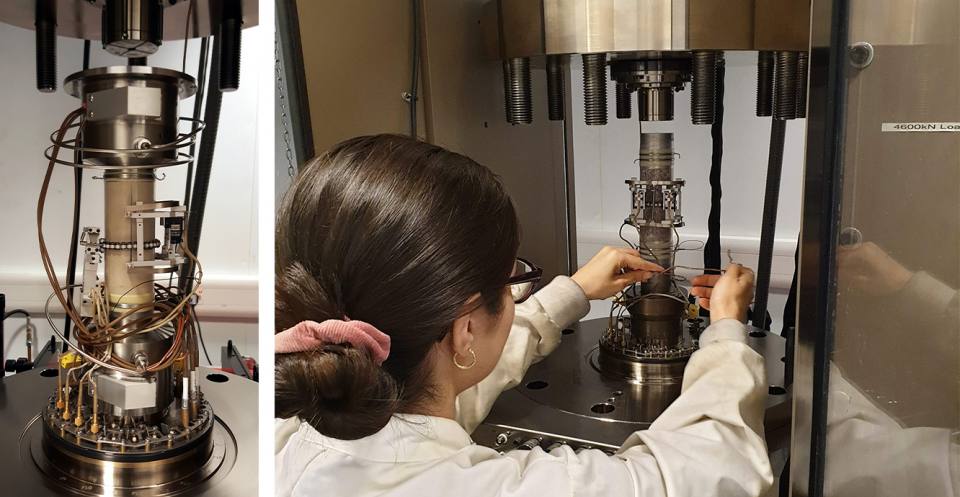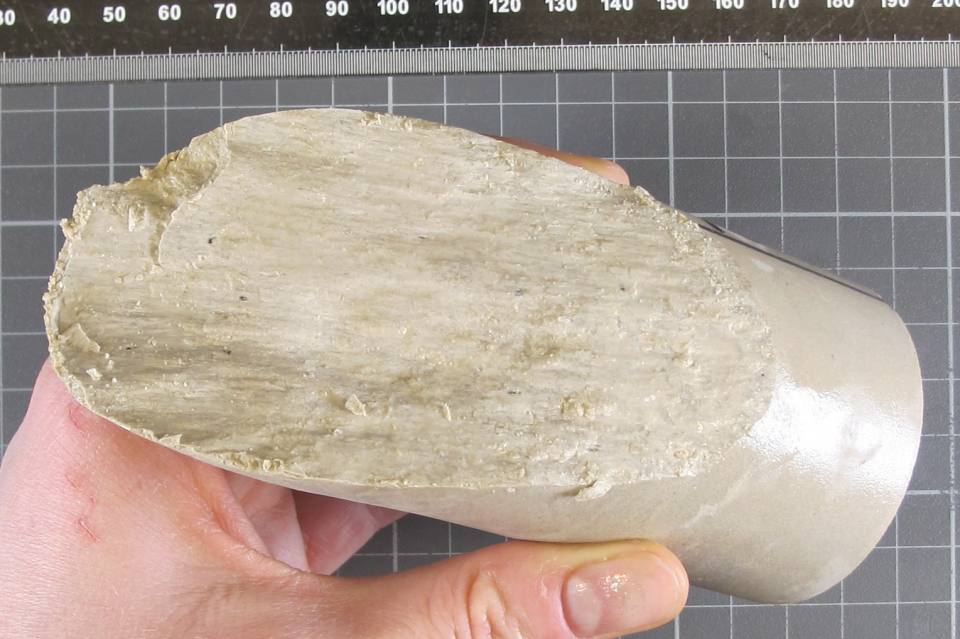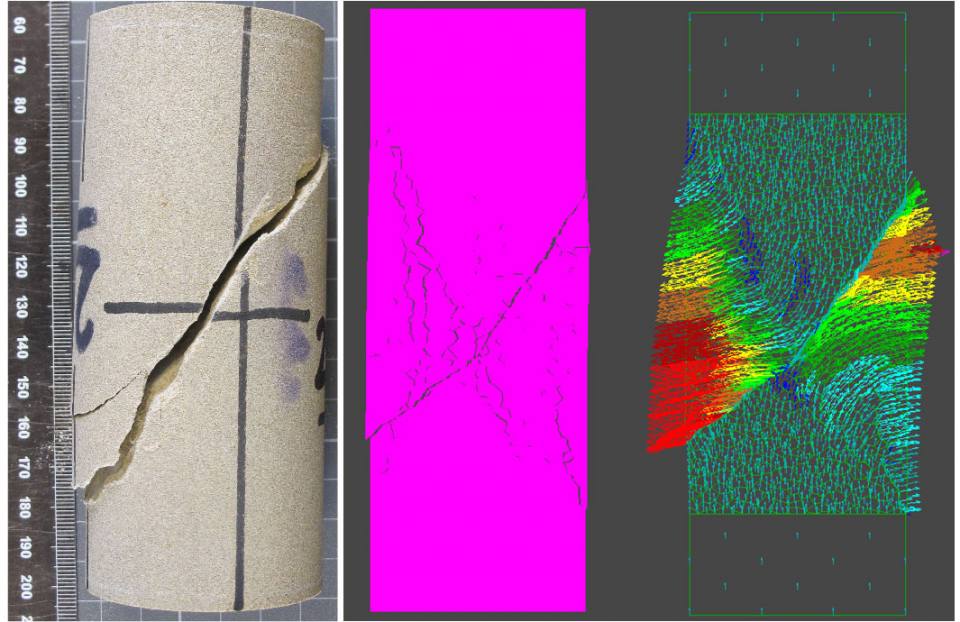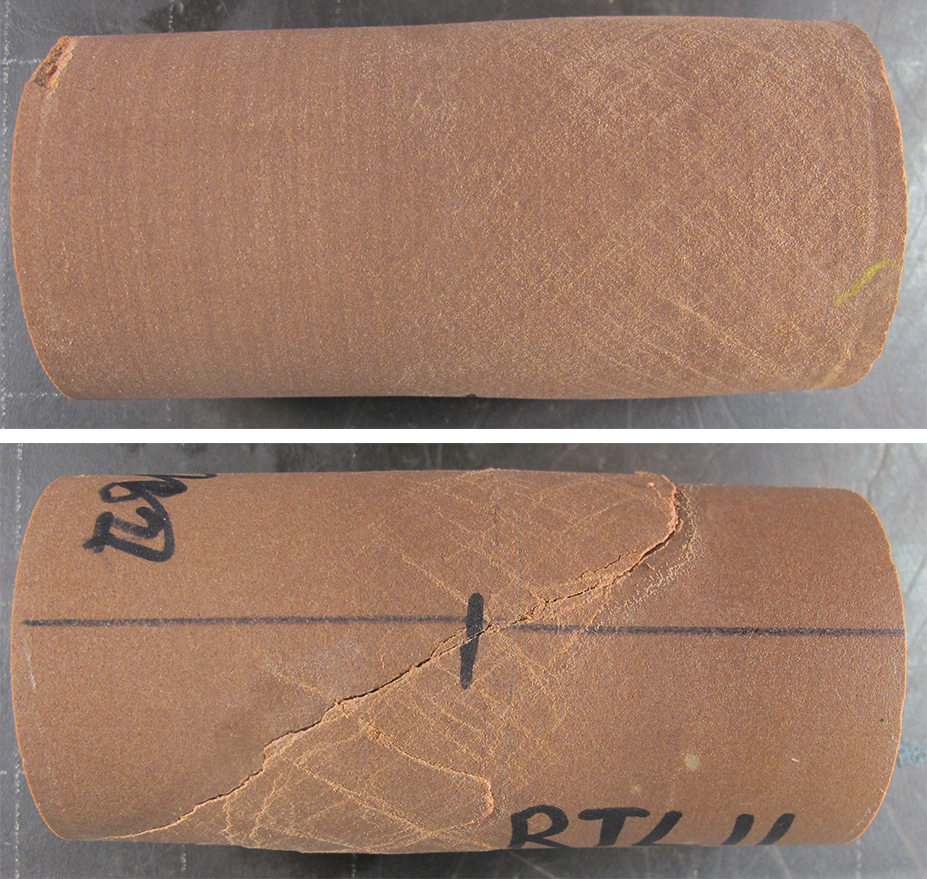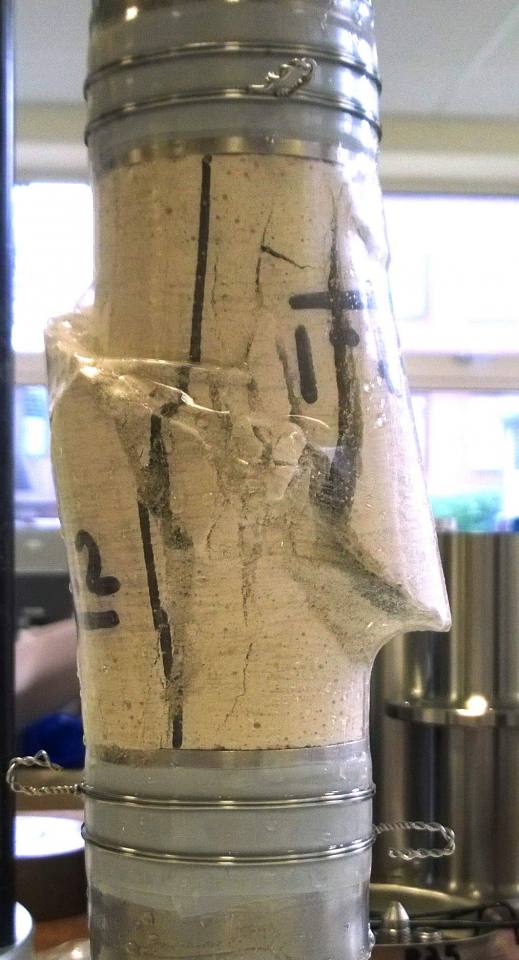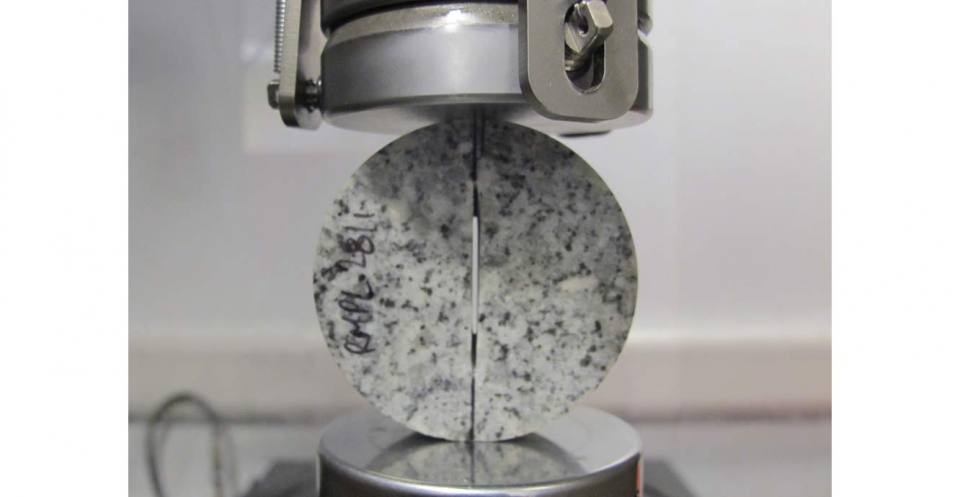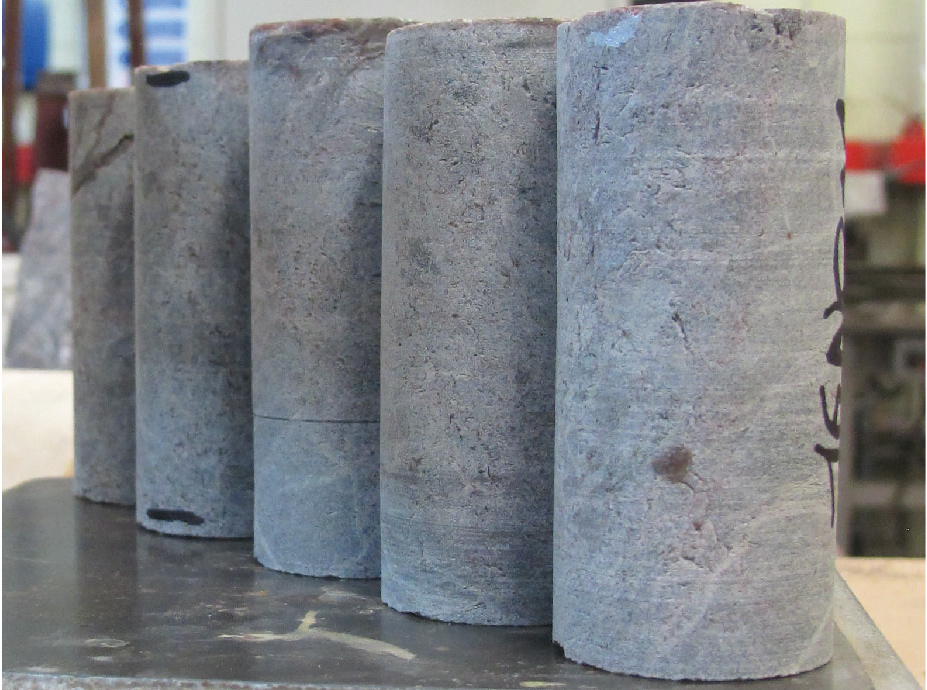The Rock Mechanics and Physics Laboratory (RMPL) undertakes research on the properties and behaviour of rocks and geomaterials at near-surface to shallow crustal depth for georesources (energy; storage), geoengineering (tunnelling) and geohazards (faults; earthquakes).
Beneath our feet, rocks continuously deform, slide and move differently across a large spectrum of environmental conditions (pressure; temperature; fluid chemistry, etc.) and time — very slowly in creep mode for instance, or very rapidly during an earthquake. These coupled processes take place at all scales, from atomic level mineral/fluid interfaces to continental faults, mostly at inaccessible, deep locations precluding direct observations.
Laboratory capabilities
RMPL is the home of BGS’s large-scale rock deformation apparatus and specialises in standard (ISRM and ASTM) and bespoke geomechanical and rock physics testing.
Testing
- Strength (triaxial and uniaxial)
- Deformability
- Thermal properties
- Geophysical properties
- Permeability
- Porosity
- Density
Equipment
- MTS 815 Rock Testing System (4.6 MN capacity servo-controlled, hydraulic load frame)
- Servo-controlled confining pressure up to 140 MPa
- Servo-controlled pore fluid pressure up to 100 MPa (water and brines)
- Heating system up to 180°C
- Four internal load cells (from 250 to 2600 kN)
- Direct contact axial and circumferential strain gauges (extensometer type)
- Ultrasonic measurements (up to 18 electrical feedthroughs)
- Point Load Strength Index
A full list is available on the RMPL ResearchGate page.
- Agliardi, F, Dobbs, M R, Zanchetta, S, and Vinciguerra, S. 2017. Folded fabric tunes rock deformation and failure mode in the upper crust. Scientific Reports, Vol. 7(1), 1–9. DOI: https://doi.org/10.1038/s41598-017-15523-1
- Castagna, A, Ougier‐Simonin, A, Benson, P M, Browning, J, Walker, R J, Fazio, M, and Vinciguerra, S. 2018. Thermal damage and pore pressure effects of the brittle–ductile transition in Comiso Limestone. Journal of Geophysical Research: Solid Earth, Vol. 123(9), 7644–7660. DOI: http://dx.doi.org/10.1029/2017JB015105
- Dobbs, M R, Cuss, R J, Ougier-Simonin, A, Parkes, D, and Graham, C C. 2018. Yield envelope assessment as a preliminary screening tool to determine carbon capture and storage viability in depleted southern North Sea hydrocarbon reservoirs. International Journal of Rock Mechanics and Mining Sciences, Vol. 102, 15–27. DOI: https://doi.org/10.1016/j.ijrmms.2017.11.018
- Martin-Clave, C, Ougier-Simonin, A, Marshall, A M, and Vandeginste, V. 2019. Impact of impurities in salt rock for underground gas storage in salt caverns. 82nd EAGE Annual Conference & Exhibition.
- Ougier-Simonin, A, and Pluymakers, A. 2018. Exploring the effect of fluid chemistry on carbonate failure strength. EGU General Assembly Conference Abstracts, Vol. 20, 19548.
- Panza, E, Agosta, F, Rustichelli, A, Vinciguerra, S C, Ougier-Simonin, A, Dobbs, M, and Prosser, G. 2019. Meso-to-microscale fracture porosity in tight limestones, results of an integrated field and laboratory study. Marine and Petroleum Geology, Vol. 103, 581–595. DOI: http://dx.doi.org/10.1016/j.marpetgeo.2019.01.043
- Vannucchi, P, Clarke, A P, de Montserrat Navarro, A, Ougier-Simonin, A, Aldega, L, and Morgan, J P. 2019. The strength inversion origin of non-volcanic tremor: observations and models. American Geophysical Union, Fall Meeting 2019.
- Woodman, J, Ougier-Simonin, A, Murphy, W, and Thomas, M E. 2018. Thermal effects on discontinuity behavior: a laboratory scale study. 52nd US Rock Mechanics/Geomechanics Symposium, Seattle, Washington.
- European Union’s Horizon 2020 ERA-NET Co-fund ACT (Accelerating CCS Technologies) programme (phase 2) REX-CO2: reusing existing wells for CO2 storage operations (2019–2022).
- University of Leicester CSE studentships: the physical and mechanical properties of natural fault zones in basaltic volcanic rocks (2018–2021).
- European Union’s Horizon 2020 programme European Carbon Dioxide Capture and Storage Laboratory Research Infrastructure (ECCSEL) ERIC
- University of Nottingham GeoEnergy Research Centre programme: impact of impurities and salt structures on environmental risks of gas storage in salt caverns (2016–2020).
- Petromaks2/PROMETHEUS: Microfracturing in Black Shales and Their Transport Properties (Norwegian Research Council / PI: Prof. F. Renard) (2017–2021).
- European Union’s Horizon 2020 programme EPOS IP-the European Plate Observing System, Implementation Phase, Grant Agreement No. 676564; Thematic Core Service Multi-Scale Laboratories (2015–2019).
Relative topics
Need more information?
You may also be interested in
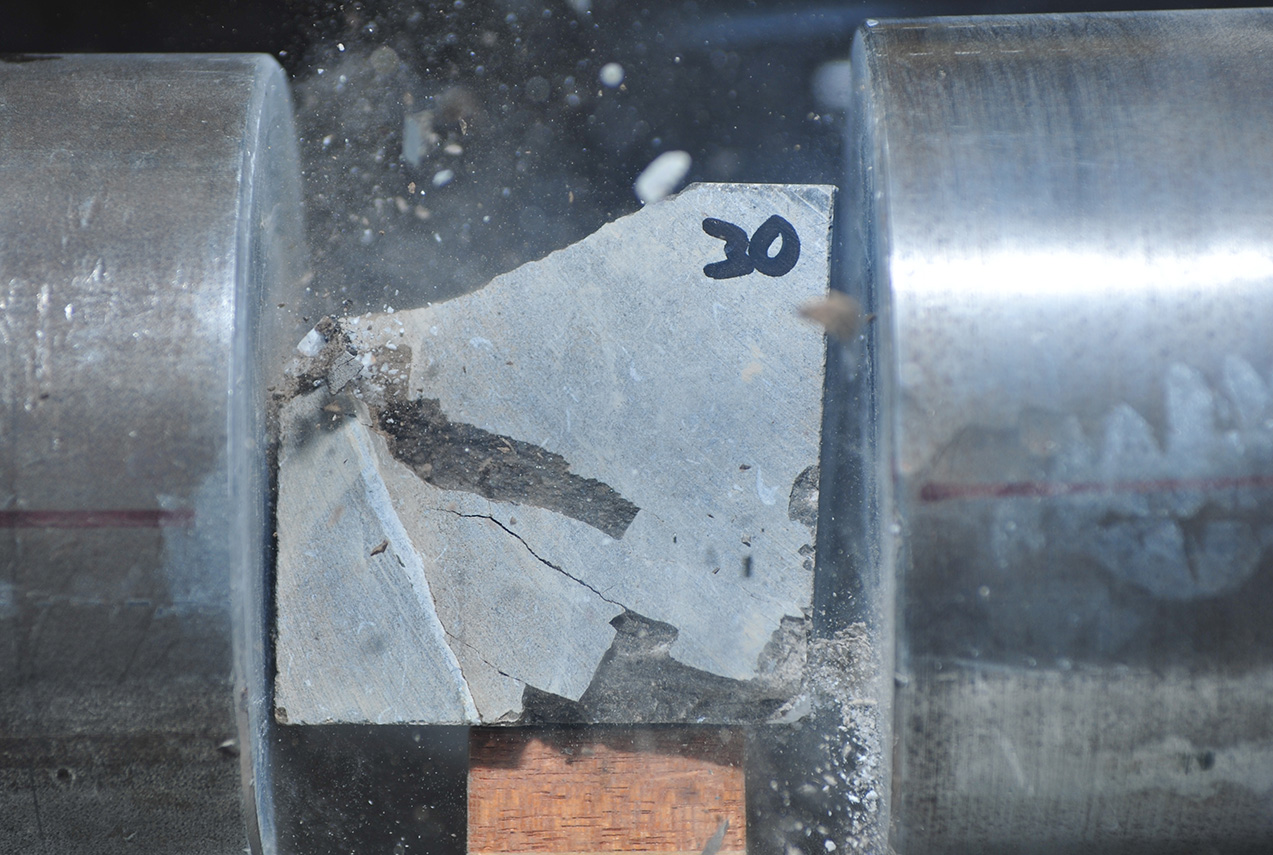
Science facilities
BGS operates and maintains a wide range of state-of-the-art laboratories and other facilities, which underpin virtually all of our research.
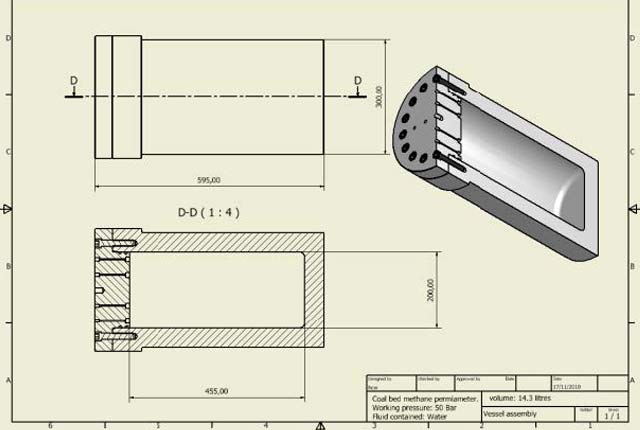
Engineering and Geotechnical Capability
Leading the development and application of field and laboratory infrastructure and long-term management of geophysical and geotechnical property data.



